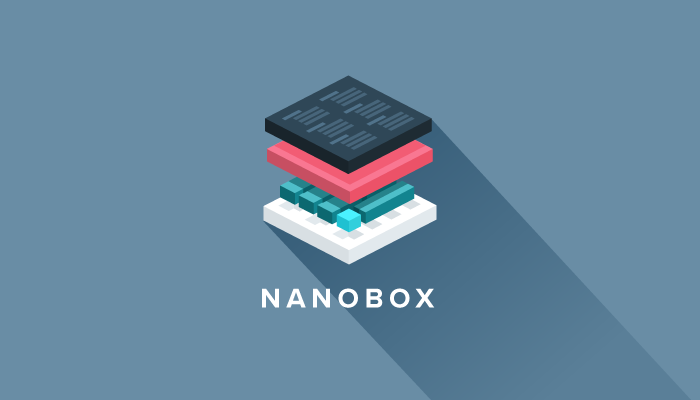WHAT’S IN THE BOX?!?!?
(Nanobox was acquired by DigitalOcean in April of 2019.)
I recently had the opportunity to jump on a conference video chat with a portion of the Nanobox team. Unfortunately, I spent the first 10 minutes bungling my way through microphone difficulties, which affected me in two separate areas:
- It made me look like a bumbling doofus who has never used a computer in his life. This was probably not a good thing.
- It ruined the opportunity for me to begin the interview like Brad Pitt in Se7en, screaming “WHAT’S IN THE BOX?!?!” and alternating between crying and firing a gun. This was probably a good thing.
Thankfully, I was speaking with a group of developers who quickly pursued alternate methods that ending with me on a video conference line, speaking into a phone. And after these brief technical difficulties, I got the story of how Nanobox came to be.
Let’s rewind 10 years. Nanobox CEO/founder Tyler Flint was living in Rexburg, Idaho, and began working with Zumiez, the world’s largest action sports retailer. As internet-based shops were coming to prominence, Flint was tasked with finding a way for Zumiez to match the agility of these smaller shops.
“The biggest problem that we saw was the dev team was not able to deliver as quickly as needed to stay competitive,” said Flint. “This was for a bunch of reasons, but a really big reason was because the deployment process between the infrastructure and the dev team was not seamless.”
Flint and his team began working on a solution that would allow the development team to concentrate on solving problems and delivering quick solutions, rather than worrying about infrastructure.
![]()
“We were looking at it as, how can we get Zumiez to stay competitive?” said Flint. “From that experience, the very first platform was born and it was created custom for Zumiez. Their webstore was really underperforming compared to their brick-and-mortar stores — we were able to greatly improve things just by streamlining the deployment system, the infrastructure, and essentially creating a platform.”
This platform-as-a-service (PaaS) was called Pagoda Box and though it was originally made for Zumiez, it’s value was soon realized by other organizations. This led to Pagoda Box hosting projects for a wide variety of companies — including Facebook, ABC, Mountain Dew, and Coke — and launching 100,000 applications with tons of successful implementations. While it was a sustainable business it was also nowhere near Heroku, the leading PaaS on the market. So they began examining other options…
“Two years ago found us in a place where we were watching trends, listening to our customers, and customers were tired of the platforms, of being locked into a platform that dictated where their app was hosted,” said Flint. “All of these data centers were popping up around the world, why can’t we take a platform-as-a-service and use it in the data center we want?”
Two years of work led to one place: Nanobox, a micro PaaS that extends the good work of Pagoda Box and takes developers even further.
“We ended up engineering a top-to-bottom solution that looks at the whole process,” said Flint. “We want a platform that is affordable, micro, it can run anywhere including your local desktop, and we want to build it on containerization and docker technologies…It’s catered for a developer to be really easy, Nanobox caters to your existing workflow — you don’t have to change what you’re doing at all. You have your application and then you put a configuration file inside that application that informs Nanobox what the application needs to be able to run — what databases, what languages, etc. It’s a very simple configuration file for a developer to say at a high-level, ‘This is what my app needs to run.’ From there, you are able to spin that up locally and do all of your development, Nanobox will build the entire platform that is needed locally. From there, you can take Nanobox and deploy it onto a production cloud like Amazon.”
![]()
Since its public release a month ago, Nanobox has seen over 1000+ users and now the heavy lifting for growth and adoption begins. As part of that strategy, Nanobox is gradually shifting operations from Idaho to Utah and hoping to have a Lehi-based office ready to go this summer.
“Rexburg was a fantastic place to incubate our startup and a great place for our team to grow and learn,” said Flint. “It’s evolved to the point where we’re trying to grow and expand, and as much as we love Rexburg, the lifestyle, the community, it just wasn’t conducive to growing a startup — especially a tech startup. We started making trips down to Utah, meeting with friends and advisors in Provo, Salt Lake, Lehi, Alpine, and it became very apparent that stuff was happening there. So we made the decision to move that way.”
While Pagoda Box continues to run (and still generate revenue from existing customers), Nanobox is the future. It’s billed as the platform for developers and its mission statement is simple: focus on code, not config.
“We have a product that’s mature, that’s two years ahead of what anyone else is working on, and it has 10 years of experience behind it,” said Flint. “All of our efforts, all of our focus is on Nanobox.”




